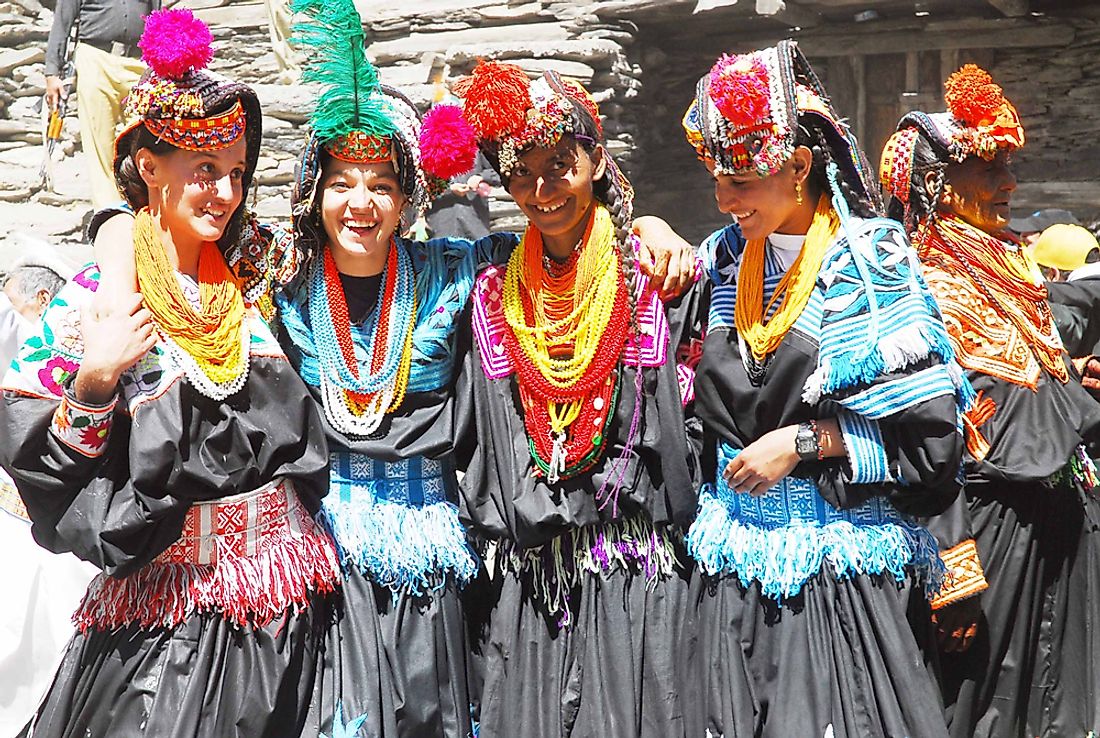Ethnic Groups In Pakistan

Pakistan is the world’s sixth most populous country with a population of over 201 million inhabitants. With a land area of 881,913km2, the country is the 36th largest in the world. The territory forming Pakistan is considered the cradle of civilization having been home to several ancient cultures. Pakistan has been ruled by several dynasties and empires including Mauryan, Achaemenid, Mongol, Mughal, and Delhi Sultanate. There are over 60 languages spoken in Pakistan. Urdu is the official national language, and a symbol of national unity understood by 80% of the Pakistani. Pakistan has six major ethnic groups and other ethnic minorities.
Punjabi
Punjabi people are the ethnic majority in the Punjab region of Pakistan and Northern India accounting for 44.7% of the population in Pakistan. The group belongs to the Indo-Aryan ethnic group. Punjabi identity is traditionally cultural, linguistic and geographical and is independent of historical religion and origin. Punjabi activities in the Indus Valley led to the early civilization in the 5th and 4th millennium BC. During that same period, the group was led by small kingdoms and tribes but was later ruled by local kings. Punjabi people are tolerant of several religions. However, Muslims and Hindus form the religious majority among the Punjabi. Sikhism and Christianity are also practiced in the area. Punjabi culture is that of the Punjab region, one of the oldest cultures in the world. The culture comprises of poetry, spirituality, weaponry, music, cuisine, language, history, and values.
Pashtun
Pashtun is an ethnic group predominant in Afghanistan and Pakistan characterized as warriors. This ethnic group forms 15.4% of the Pakistani population. There has been a debate as to who qualifies to be Pashtun but the widely agreed view is that Pashtuns are Eastern Iranian people who speak Pashto as their first language. Traditionally, a Pashtun must be a Muslim and adhere to Pashtunwali code thus only those with Pashtun fathers qualify also to be a Pashtun. Pashtunwali code defines the culture of the Pashtun and involves a self-governing tribal system that controls all aspects of the group. Guests seeking help from Pashtuns are highly regarded and treated with dignity and respect.
Sindhi
Sindhi are natives to the Sindh Province of Pakistan. This ethnic group forms 14.1% of Pakistan’s population. Sindh Province was one of the places to be influenced by Islam because of its location. The Muslims had a great influence on the Hindu who initially resided in the region. After Pakistan independence in 1947, most of the Sindhis migrated to India living a few of the group behind. The Sindhis in Pakistan are mainly Muslims, Hindus, and Sikhs. Sindhis’ culture is heavily influenced by Islam especially the traditional first names.
Saraiki
Saraiki is a subgroup of Punjabi people in Pakistan and speaks Saraiki dialect spoken by the Punjabi. This ethnic group forms 8.4% of the Pakistani population although the majority of Saraiki are counted among the Punjabi groups. Saraiki people practice several religions but the majority is Muslims with Christian minority. The culture of the Saraikis has been greatly influenced by the Punjabis because of their close association.
Minor Ethnic Groups
Pakistan’s minor ethnic groups include Muhajir who are mainly of the Arabic origin forming 7.6% of the population and Balochistan found in the southwestern part of Pakistan forming 3.6% of Pakistani.
Ethnic Groups In Pakistan
| Rank | Ethnic Group | Share of Pakistani Population |
|---|---|---|
| 1 | Punjabi | 44.7% |
| 2 | Pashtun | 15.4% |
| 3 | Sindhi | 14.1% |
| 4 | Sariaki | 8.4% |
| 5 | Muhajir | 7.6% |
| 6 | Balochi | 3.6% |
| * | Other Groups | 6.2% |











